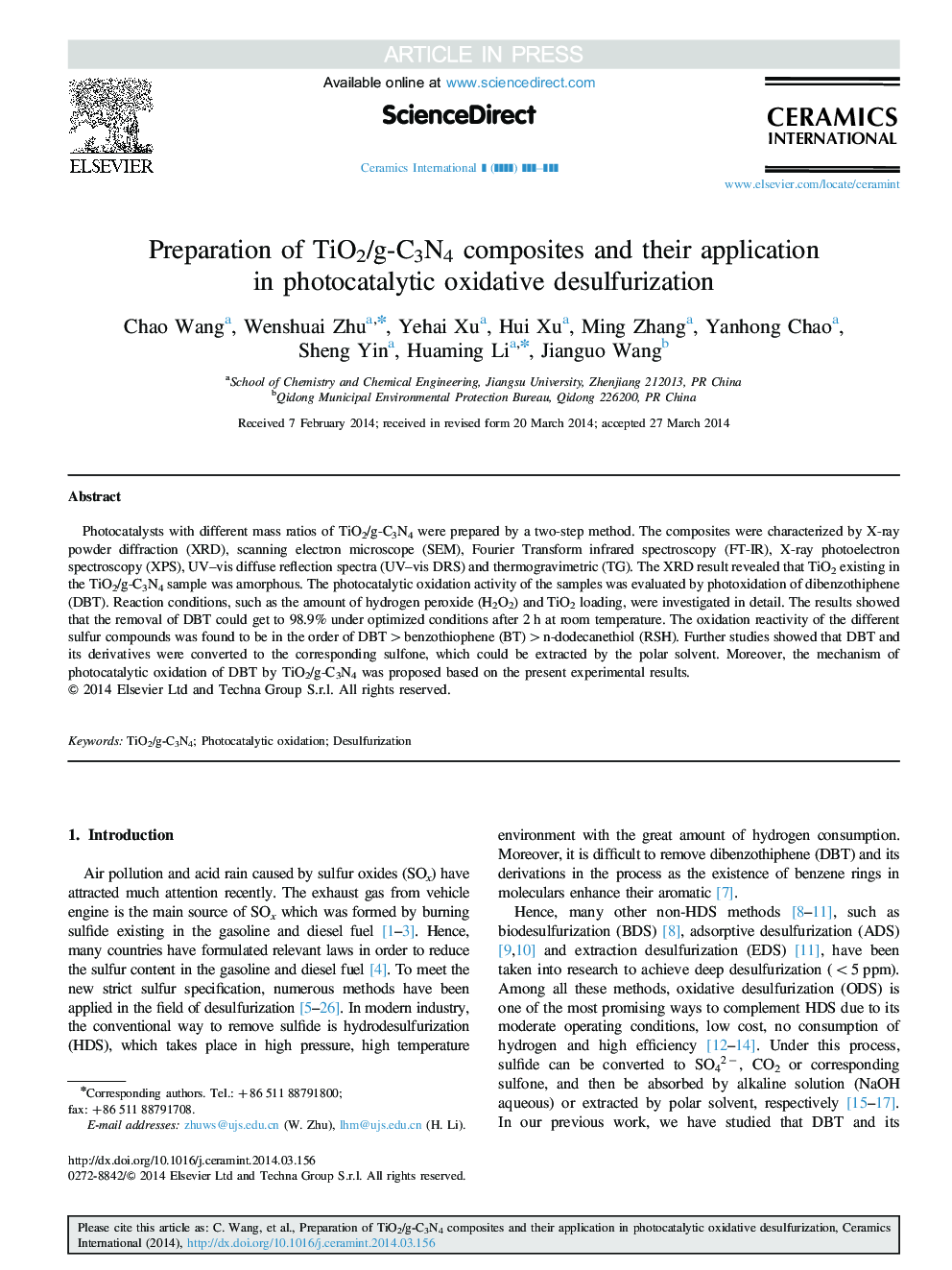| Article ID | Journal | Published Year | Pages | File Type |
|---|---|---|---|---|
| 10625400 | Ceramics International | 2014 | 9 Pages |
Abstract
Photocatalysts with different mass ratios of TiO2/g-C3N4 were prepared by a two-step method. The composites were characterized by X-ray powder diffraction (XRD), scanning electron microscope (SEM), Fourier Transform infrared spectroscopy (FT-IR), X-ray photoelectron spectroscopy (XPS), UV-vis diffuse reflection spectra (UV-vis DRS) and thermogravimetric (TG). The XRD result revealed that TiO2 existing in the TiO2/g-C3N4 sample was amorphous. The photocatalytic oxidation activity of the samples was evaluated by photoxidation of dibenzothiphene (DBT). Reaction conditions, such as the amount of hydrogen peroxide (H2O2) and TiO2 loading, were investigated in detail. The results showed that the removal of DBT could get to 98.9% under optimized conditions after 2Â h at room temperature. The oxidation reactivity of the different sulfur compounds was found to be in the order of DBT>benzothiophene (BT)>n-dodecanethiol (RSH). Further studies showed that DBT and its derivatives were converted to the corresponding sulfone, which could be extracted by the polar solvent. Moreover, the mechanism of photocatalytic oxidation of DBT by TiO2/g-C3N4 was proposed based on the present experimental results.
Related Topics
Physical Sciences and Engineering
Materials Science
Ceramics and Composites
Authors
Chao Wang, Wenshuai Zhu, Yehai Xu, Hui Xu, Ming Zhang, Yanhong Chao, Sheng Yin, Huaming Li, Jianguo Wang,
